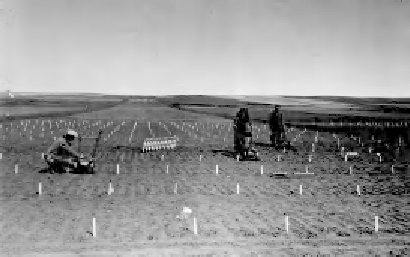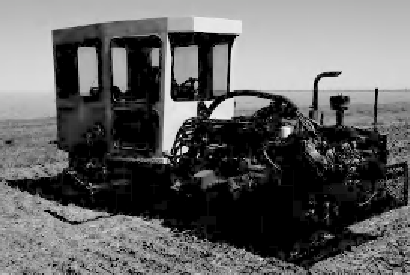Agriculture Reference
In-Depth Information
porary lines had neither the Wichita nor
Cheyenne variant, but something different. Hence
if selection had been for the favorable Wichita
variant, many adapted western Nebraska lines
would have been discarded, as well as a few high-
yielding lines that surprisingly had the Cheyenne
variant. Also, all the lines with neither the Wichita
nor the Cheyenne variant would have been dis-
carded. These lines may or may not have an
important molecular variant at that locus, but
many were high-yielding lines, regardless of
where the QTLs affecting yield are derived.
Clearly QTL detection and marker-assisted
selection will be widely used to add important
QTLs to lines that lack them and to pyramid
genes; however, wheat breeding with its constant
input of new germplasm will evolve from marker-
assisted selection to marker-assisted breeding,
whereby phenotyping (if carefully done) will be
coupled with inexpensive markers to allow popu-
lations with novel QTLs to be used immediately
(Bernardo and Yu 2007).
Quantitative trait loci have played an important
role in identifying chromosomal regions that
control useful traits such as grain protein concen-
tration. The next step is dissection of the QTL so
that the desirable portion of a chromosomal region
is clearly marked and ultimately only the gene
controlling the trait is transferred. For example
high grain protein content was detected in a wild
population of
T. turgidum
L. ssp.
dicoccoides
(Avivi
1978). Subsequently, the chromosomal region
controlling high grain protein content from the
Israel accession FA15-3 was transferred to hexa-
ploid wheat cultivar Glupro (ND643) by Dr. R.
Frohberg, North Dakota State University. Glupro
had elevated grain protein concentration (later
determined to be controlled by
Gpc-B1
), but
this trait was linked with low grain volume
weight. Using restriction fragment length poly-
morphism (RFLP) analysis Mesfi n et al. (1999)
identifi ed a 15-cM segment of the 6BS region of
Glupro to be in common with the original source
FA15-3. A PCR-based marker specifi c to the
XNor-B2
locus (Khan et al., 2000) was used
to transfer
Gpc-B1
in the 6BS region from
the breeding line 90B07-AU2B (parentage
'Pasqua'*2/Glupro) to BW621. A selected line
(a)
(b)
Fig. 13.1
(a) Human-powered V-belt seeders planting mul-
tirow yield trials in southern Saskatchewan, 1930s (courtesy
SPARC, AAFC) and (b) self-propelled, reduced-tillage, air-
conditioned seeder for planting multirow yield trials (courtesy
SPARC, AAFC; photograph taken by D. Schott).
et al., 2003), and in many cases QTL discovery
may benefi t from the extraordinary cytological
resources available in wheat (Berke et al., 1992).
However, identifying QTLs and their use may be
retrospective. Considering the major yield QTL
identifi ed by Campbell et al. (2004), Mahmood et
al. (2004) found that many high-yielding contem-
porary cultivars had the favorable QTL molecular
variant from 'Wichita' for grain yield. They also
found that many of the western Nebraska culti-
vars adapted to dryland production had the less
favorable molecular variant from 'Cheyenne'. In
western Nebraska, the QTLs from Wichita and
Cheyenne had very small effects, and thus it was
not surprising that the lower yielding Cheyenne
variant was often found. However, many contem-






